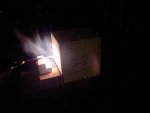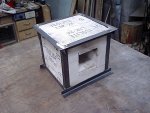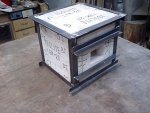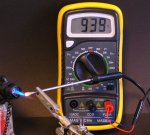Stuart Ablett
Member
- Messages
- 15,917
- Location
- Tokyo Japan
I used 7 bricks.
He used 8, because he sat one on top to cover the gap in the roof bricks, but I've been noodling this and I've come up with an idea
Right now the floor bricks that the roof bricks (for a lack of better terms) have a joint that goes from the heart of the forge to the outside of the forge. I don't really think it would be a major problem, but....
I plan on building my forge into some sort of a frame, so it can be portable, I'll want to take it to our turners club meetings if we do some more tool making, and the forge, when not in use, will sit somewhere out of the way. I was thinking of the joint in the floor bricks and how I can combat that by leaving an airspace under the forge by mounting it of 4 legs the would stand the forge up off the workbench. The joint in the roof bricks would just be inefficient, but I think I have an idea around this problem.
Now the joint in the floor and the roof bricks is just a straight joint, but with just a little carving, I could make a staggered joint, would only have to be 1/4" or so.........

It would also make things hang together better too.
What do you think?
Cheers!
He used 8, because he sat one on top to cover the gap in the roof bricks, but I've been noodling this and I've come up with an idea
Right now the floor bricks that the roof bricks (for a lack of better terms) have a joint that goes from the heart of the forge to the outside of the forge. I don't really think it would be a major problem, but....

I plan on building my forge into some sort of a frame, so it can be portable, I'll want to take it to our turners club meetings if we do some more tool making, and the forge, when not in use, will sit somewhere out of the way. I was thinking of the joint in the floor bricks and how I can combat that by leaving an airspace under the forge by mounting it of 4 legs the would stand the forge up off the workbench. The joint in the roof bricks would just be inefficient, but I think I have an idea around this problem.
Now the joint in the floor and the roof bricks is just a straight joint, but with just a little carving, I could make a staggered joint, would only have to be 1/4" or so.........

It would also make things hang together better too.
What do you think?
Cheers!

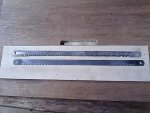
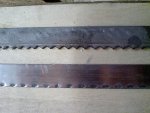




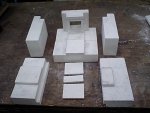
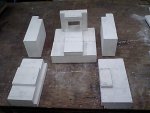
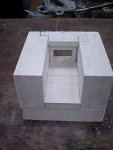
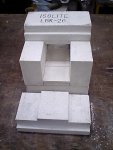
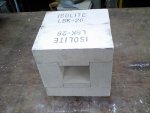

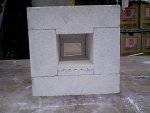
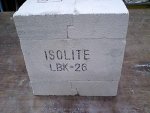
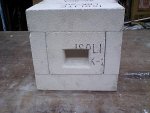
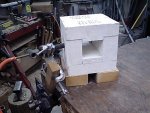

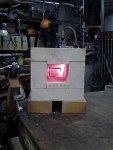



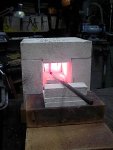
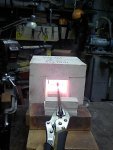
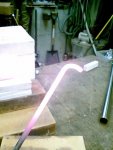

 The gage is in MPa "Megapascal" and one MPa is 145.0377 Psi, so that, times 0.03 is 4.35 Psi.
The gage is in MPa "Megapascal" and one MPa is 145.0377 Psi, so that, times 0.03 is 4.35 Psi.